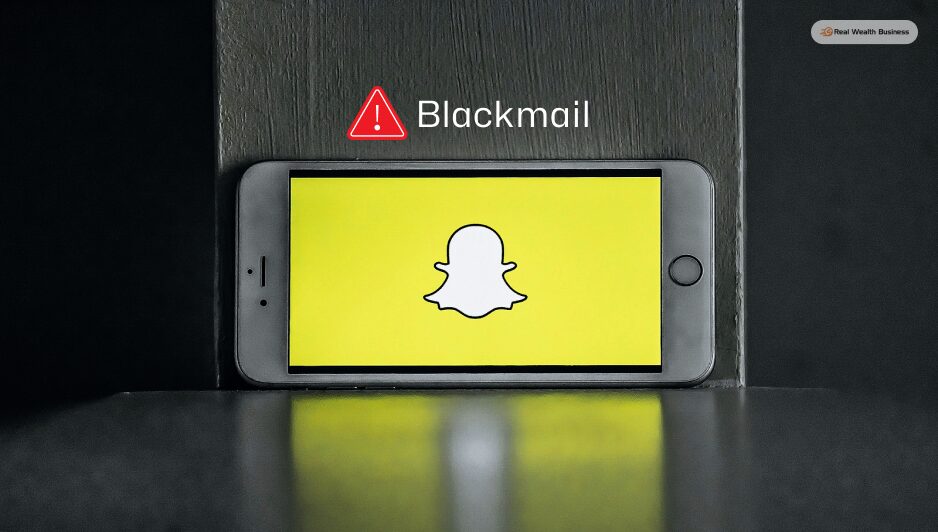Blackmail on Snapchat: Your ULTIMATE Guide to Deal With it!
by Ankita Tripathy social media Published on: 06 November 2024 Last Updated on: 21 May 2025

Being a victim of blackmail on Snapchat is the newest form of extortion in today’s day and age. So, if you are a part of that, and are desperately looking for a way to get out of it, I have you covered!
First of all, it is extremely important that you do not take it lightly (just in case you didn’t know). It is a serious crime and has been becoming increasingly popular over the past few years.
Snapchat users, irrespective of their age and geographic location have complained about strangers and people from their contact blackmailing them.
So, what is the way out of it? In order to find out, read till the end and thank me later!
Blackmail on Snapchat is the New Way of Extortion!
Blackmail on Snapchat is an example of internet extortion. If they don’t get money, personal information, or other demands, a blackmailer threatens to post private or embarrassing images, videos, or other information on Snapchat.
Blackmailers frequently manipulate their victims by instilling feelings of humiliation and terror, which makes them feel helpless.
Snapchat blackmail can be used against anyone. Snapchat has a really high audience among teenagers, who are particularly vulnerable to such an act.
Blackmailers frequently target individuals by posting private images, videos, or personal information online. Due to the increasing popularity of online dating, blackmailers often target people who are using the site to find love.
Sextortion occurs on all social media platforms. One of the most popular apps where people commit this crime is Snapchat.
The disappearing feature allows you to set messages, videos, and photographs to be immediately erased after they are received. This allows gullible victims to divulge private information without worrying about someone else recording it.
They are unaware that third-party apps used by blackmailers have the ability to secretly screen-record and take screenshots of their content.
Although victims of sextortion can be of any age, children and teenagers are the primary targets of the crime. Cyber tipline sextortion complaints from the National Center for Missing and Exploited Children revealed patterns.
According to the reports, the tipline has been looking into sextortion reports since 2013. Since then, the number of reports has increased dramatically each year, rising from 90% to 150% in the first few months of 2016. In 2022, the NCMEC received over 32 million reports of suspected child exploitation.
Blackmail on Snapchat: What Should You Do?

So, if you are a victim of blackmail on Snapchat and are wondering how to escape from this, please do not worry! Here are a few things that you need to do:
Keep Your Calm:
First and foremost, try not to lose your temper or become anxious. Recognize that you are not and will not be the first person to become a victim of Snapchat blackmail. Remember that you have resources and solutions to assist you deal with this circumstance.
Block and Report the Blackmailer:
Blocking the blackmailer on Snapchat should be your initial course of action. This will restrict their access to your account and stop them from sending you any further pictures.
Additionally, you should report them to Snapchat by pressing on their profile and then selecting “Report” from the three dots in the top right corner of the screen. This simple procedure will lessen the likelihood that the blackmailer would harm other people.
Avoid Interacting with the Blackmailer:
Avoid interacting with or responding to blackmailers at all costs. They will continue to beg for money or take advantage of your feelings.
To put further pressure on you, they might pose as your attorney or a law enforcement official, but that isn’t how things operate in the real world.
Try to keep your comments brief and your tone forceful if you have to speak with them. The best course of action in these circumstances is to limit communication with your closest friends or family members.
Make a Law Enforcement Complaint:
Blackmail is a severe crime that has an impact on people all over the world. Therefore, don’t hesitate to ask the appropriate authorities for assistance.
The sheriff, the FBI, or the state police are just a few of the local law enforcement organizations you can contact to report the occurrence.
Give them all the information and supporting documentation they need to conduct their investigation, such as phone numbers, texts, and screenshots.
The FBI’s Internet Crime Complaint Center (IC3) is another place you can lodge a complaint.
How to Report a Blackmail on Snapchat?
Reporting the extortion to Snapchat is the next step after protecting the evidence. It is crucial to report the blackmailer’s account for two reasons.
Firstly, it enables Snapchat to look into the matter and ban the users, preventing them from harassing you or other users in the future. And secondly, it establishes a formal record that will support your case should you ever need to call the police.
To report blackmail on Snapchat, follow these steps:
- Visit the chat window with the person extorting you. Holding down their name will cause a menu to appear.
- After selecting “Manage Friendship,” select “Report.”
- Choose the most appropriate justification for your report, such as “Shared content I didn’t want to be shared” or “Pressured me to send photos/videos.”
- After adding any more information regarding the extortion case, click submit.
- Make sure to disable the blackmailer in your settings after reporting them so they can’t get in touch with you again.
Furthermore, by visiting support.snapchat, you can file a separate report with Snapchat outside of the app.
Snapchat’s team will be able to look into the blackmail threats more quickly if screenshots are included. In addition to reporting the blackmailer, you should adjust your privacy settings on Snapchat.
- Make your account private so that only friends who have been approved can get in touch with you.
- To make it more difficult for someone to hack your account, enable two-factor authentication.
- To manage who may view your narrative, location, and other details, use the “Who can…” options.
As you settle the matter, following these procedures will stop the blackmailer or any other dubious accounts from gaining access to your information. When dealing with people online, the most crucial rule of thumb is to avoid adding or corresponding with strangers.
Who Can Help You in Dealing With Blackmail on Snapchat?
You’re not alone if you’re being blackmailed on Snapchat, and there are a number of organizations available to assist you. Although dealing with blackmail might be difficult, getting in touch with the appropriate individuals and groups can help.
1. Get in Touch With Snapchat Support:
Reaching out to Snapchat’s support staff can be a smart first step.
They can assist you with reporting the account, protecting any evidence, and securing your profile because they are experienced in dealing with incidents of harassment and extortion.
To begin, visit Snapchat’s “Report a Safety Concern” page or get in touch with them via the help section of the app. To enable them to react quickly, be explicit about the circumstances.
2. Law Enforcement:
Since extortion is illegal, you should think about contacting your local police department or cybercrime unit, particularly if the perpetrator is requesting money or threatening to divulge private information.
The resources and power to look into cases of cyber blackmail are available to law enforcement. Try to include as much information as you can when you get in touch, including texts and screenshots, even if some have vanished.
3. Cybercrime Helplines:
There are dedicated helplines for cybercrime in many nations. For instance, the FBI’s Internet Crime Complaint Center (IC3) is a place to report cybercrime incidents in the United States.
Reports of online blackmail are handled by Action Fraud in the UK. To help you feel more comfortable online, these organizations may offer tools and assistance. For more assistance, look for reliable national resources.
Future Predictions About Blackmail on Snapchat
Snapchat blackmail is becoming a more significant problem; experts believe it will only worsen as social media and technology develop.
It’s critical to watch future trends because scammers are constantly developing new ways to exploit Snapchat’s vulnerabilities as more people use it for private communication.
First, blackmailers will probably get more advanced as AI and deepfake technology are widely used. They can employ AI to produce realistic-looking but phony photos or videos to make threats seem even more plausible.
Scammers can now more easily create information that looks real thanks to these technologies, which increases the number of “sextortion” and false allegation instances.
Experts caution that blackmailers may use deepfake technology extensively, making it difficult for victims to establish their innocence.
Second, a blackmailer may benefit from Snapchat’s privacy and security features, such as disappearing messages. Even if these features intend to keep your interactions private and secure, they make it harder to obtain proof if someone tries to blackmail you.
Blackmailers could use these characteristics to swiftly erase all communication records, leaving victims without documentation and making it more difficult to submit instances to the police.
Additionally, given their propensity to divulge personal information online, youthful users of Snapchat may be especially susceptible to blackmail as more of them sign up.
Younger people may be the target of scammers who take advantage of their inexperience with internet dangers. Organizations anticipate a rise in educational initiatives and materials designed to assist youth in identifying and responding to online blackmail efforts.
It’s critical to keep up with Snapchat’s security features, refrain from revealing private information, and report any questionable activity to safeguard yourself. By knowing these potential hazards, users can better protect themselves against threats in the constantly changing social media world.
Read More:


































































































